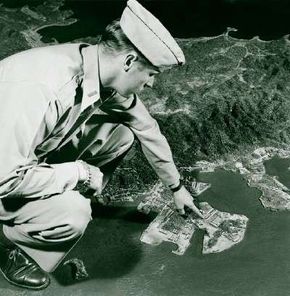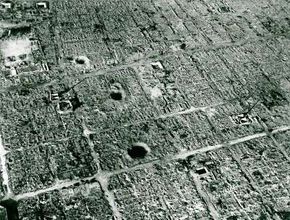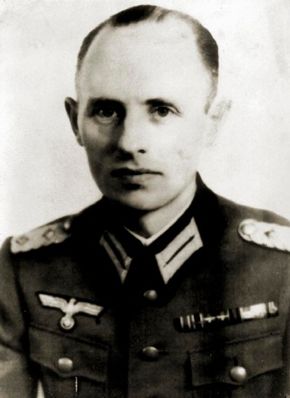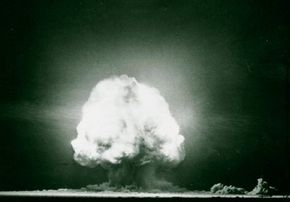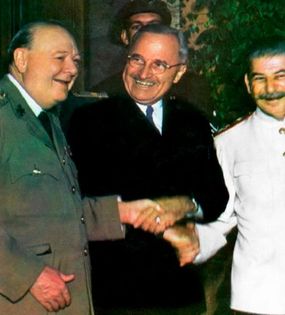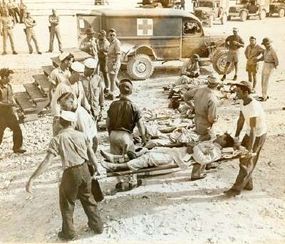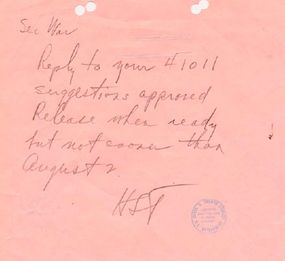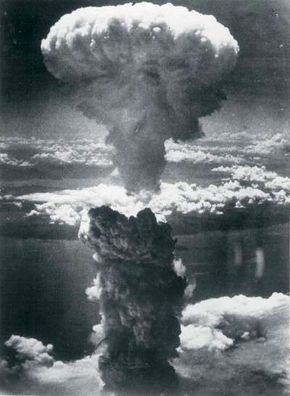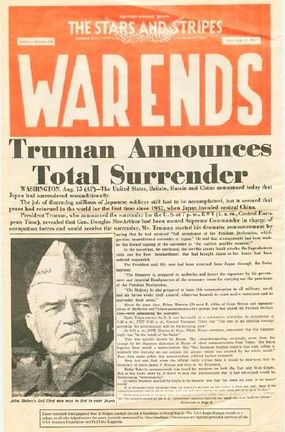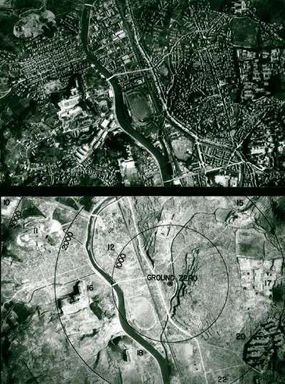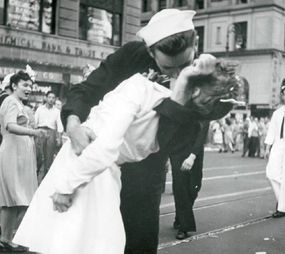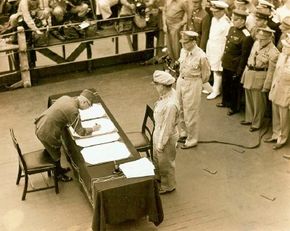After the replacement of Tojo Hideki as prime minister in July 1944 by General Koiso Kuniaki, the Japanese continued to adhere to their basic strategy as World War II came to an end. That was to fight so hard and inflict such heavy casualties on the Americans that the latter would be willing to settle for a peace in which Japan could retain some of its gains, would not be occupied or disarmed, and would not have its military or civilian leaders tried as war criminals.
The Japanese government made an effort to persuade the Soviet Union to either mediate some sort of compromise or, alternatively, reverse alliances and join Japan in fighting the Western powers. A new prime minister, Admiral Suzuki Kantaro, saw these efforts fail; he did not grasp that this was because Stalin had decided to fight Japan, not his current allies.
Advertisement
By the summer of 1945, Japan's situation had become desperate. Allied aircraft and submarines had decimated its already inadequate merchant fleet. Oil and other raw materials could not be delivered by sea. The big reason for this was U.S. airpower. A year earlier, the American bomber force was built up on the conquered islands of the Marianas. From those islands, especially Tinian and Saipan, long-range B-29 bombers began to pound the home islands in the fall of 1944 and the winter of 1944-1945. Under a new commander, Major General Curtis LeMay, the Americans shifted much of their effort from high-level aimed bombing with explosives to low-level area bombing with incendiaries.
The raid on Tokyo on March 9, 1945, was the first large incendiary raid. Some 16 square miles of the city were burned, more than 80,000 people were killed, and a million Japanese civilians were left homeless. Similar if somewhat smaller raids were mounted against other large Japanese cities in the following months. In addition, aircraft carriers brought additional planes to raid coastal cities, and land-based planes dropped mines in the main shipping lanes.
While havoc reigned on the home islands, the Japanese land forces in China and those forces still holding islands and parts of islands in the South and Southwest Pacific found themselves without many of the supplies they needed. The Americans and Australians launched one invasion after the other in the East Indies, and the British prepared to follow up on their reconquest of Burma with a landing on the coast of Malaya in order to retake Singapore.
The planning for an invasion of the Japanese home islands went forward; on June 18 President Truman gave his tentative approval of the landing on Kyushu (Operation Olympic). Both the final go-ahead for this assault, scheduled for November 1, and the subsequent landing on Tokyo Bay (Operation Coronet) scheduled for March 1, 1946, would have to come later. The bloody fighting that was still going on at Okinawa and elsewhere suggested that invasion of the home islands would result in huge casualties. The Pentagon ordered hundreds of thousands of Purple Hearts for wounded soldiers, and there was discussion of the possible need to draft nurses.
The collapse of Chinese military resistance in the summer of 1944 made it all the more imperative that Soviet Union forces attack the Japanese on the mainland of Asia and thereby prevent them from reinforcing the home islands. President Truman was greatly relieved when Stalin reiterated his promise to invade Manchuria three months after the defeat of Nazi Germany. By the time Stalin made his promise at the July 16-August 2 meeting of the three powers at Potsdam, Germany, large numbers of Red Army units and commanders were already on their way to the Soviet East Asian provinces.
At the meeting, Truman told Stalin that a powerful new weapon was now ready. Having been briefed on Soviet Union espionage discoveries about the atomic bomb project, the president thought Stalin might know what he was talking about. Regardless, he urged Truman to use the powerful weapon promptly. Just before the meeting, Truman had been informed that the first A-bomb test conducted in New Mexico had been successful. The project, initiated by Roosevelt years earlier, was now beginning to produce the first bombs.
At the conclusion of the Potsdam meeting, the Allies issued a special "Declaration" calling on Japan to surrender, but the threat was ignored. Therefore, Truman ordered that an atomic bomb be dropped on Hiroshima on August 6. The results were devastating, with close to 80,000 deaths.
In discussion with Secretary of War Henry Stimson and Army Chief of Staff George Marshall, Truman had decided that if the first bomb did not shock the Japanese into surrender, a second one would be dropped on another city. But if that did not persuade the Japanese to surrender, the bombs that later would become available would be saved for use in support of Operation Olympic. Since the bomb on Hiroshima did not prompt Japan to surrender, the second one was dropped on Nagasaki on August 9.
Anxious discussion took place inside the Japanese government, especially after Tokyo learned that the Soviet Union was joining Japan's enemies and invading Manchuria. Even after the second bomb was dropped, half of the Japanese leadership wanted to continue the war, hoping that the casualties that they expected to inflict on the Americans during landings at Kyushu would produce a change in American objectives. It was in the face of an evenly split group of leaders that Emperor Hirohito insisted that surrender was the only possible course. A coup attempt by those who wanted to continue fighting failed narrowly. The stage was set for a formal surrender, which was signed on the battleship Missouri on September 2.
Japan surrendered peacefully, and was not divided into zones of occupation the way Germany had been. Although western Honshu was under a British Commonwealth Occupation Force (BCOF), the home islands as a whole retained a Japanese administrative system that was under the supervision of an American occupation force and supreme commander (General Douglas MacArthur).
The Soviet Union, in addition to seizing the Kurile Islands, also took control of small islands off the coast of the northern home island of Hokkaido and removed the Japanese inhabitants. While Japan thus escaped the decades of partition that became Germany's fate, the Soviet action precluded the signing of a peace treaty between Russia and Japan.
See the next page for a detailed timeline of World War II events in early June 1945, as Japanese forces began to show their desperation.
To follow more major events of World War II, see:
Advertisement
